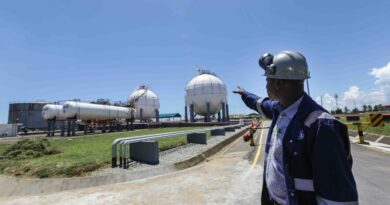Kenya identifies eight major challenges in the oil and gas sector

The Kenyan government wants to bolster its oil and gas sector especially the upstream sector where it seeks to develop its commercial crude oil deposits that were discovered in 2012 but are yet to be exploited.
Kenya has a robust downstream and midstream petroleum sector and seeks to grow its fledgling upstream sector. Kenya has an estimated population of about 54 million people, and demand for petroleum products is tipped to grow in line with the population increase.
Domestic demand for petroleum products however decreased by 2.10% in the financial year ended June 2024, totaling 5,460,436.82 cubic-meters when compared to the previous financial year. The lower demand was due to a tough economic environment that has left households and businesses with a diminished purchasing power.
It is on this backdrop that the Ministry of Energy and Petroleum has identified in the draft National Petroleum Policy, 2024 major challenges that have to be addressed in order for the country to achieve its energy goals.
These challenges are;
Inadequate Local Technical and Financial Capacity
The country’s oil and gas sector players have inadequate skills for: interpretation of geoscientific data; appraisal and development of petroleum resources; decommission the oil fields and facilities. This limits active participation in Upstream petroleum operations.
Inadequate Data on Exploration Potential
The country lacks comprehensive geoscientific data on all the 63 Petroleum Blocks. This limits the marketing of the open Petroleum Blocks, and identification and exploitation of new petroleum resources. It also hinders attraction of investment in the Upstream sub-sector.
Data Management
The sector lacks a robust data management and reporting framework, which hinders realization of optimal benefits derived from petroleum operations. Establishment of a data management system will result in improved efficiency in management of revenue generated from oil and gas sector, enhance data security and lead to effectiveness in use of the digital platforms in marketing the open petroleum blocks.
Fluctuations in Global Crude Oil Prices
Fluctuations in global crude oil prices impact on petroleum consumption, and exchange rates affecting profit margins and investment decisions by extension. This in turn impacts on the prices of petroleum products locally.
Inadequate Infrastructure
The country has a constrained capacity for storage of petroleum fuels to meet the growing demand in the country and the region. This has led to delays in offloading of petroleum products resulting in high demurrage charges. In addition, the country lacks spare capacity to hold strategic stocks for petroleum products thus exposing the country to shortage risks in the event of supply disruptions.
Low LPG Uptake in the Country
The country has insufficient common user import facilities for handling bulk LPG in Mombasa and hinterland. The existing bulk LPG import facilities are largely owned and operated by private companies. In addition, the country lacks a framework to guide importation of LPG, which has led to low competitiveness in the process thereby increasing retail prices. Consequently, the high retail prices have led to low penetration of LPG in the country. However, the government is in the process of finalizing the development of LPG importation framework.
Inadequate Legal and Regulatory Framework for the Sector
In 2019, Kenya reformed its petroleum legal framework and subsequently enacted attendant regulations. However, emerging issues and challenges in the country’s oil and gas sector require review of the petroleum laws and regulations to enhance efficiency of petroleum operations and increase investment in the sector. There is also a need for enactment of regulations to effectively implement the Petroleum Act, 2019 in order to enable the country to compete with other emerging jurisdictions in efficient harnessing of its hydrocarbons, increase LPG uptake and promote distribution and access to petroleum products.
High Capital Investment in Exploration and Development
Petroleum operations are capital-intensive and technical in nature, with high-risk investments. This has led to low investments in the Kenyan upstream as a result low appetite for Reserve Based Lending (RBL)
brian@theenergyreview.com
Discover more from THE ENERGY REVIEW
Subscribe to get the latest posts sent to your email.


